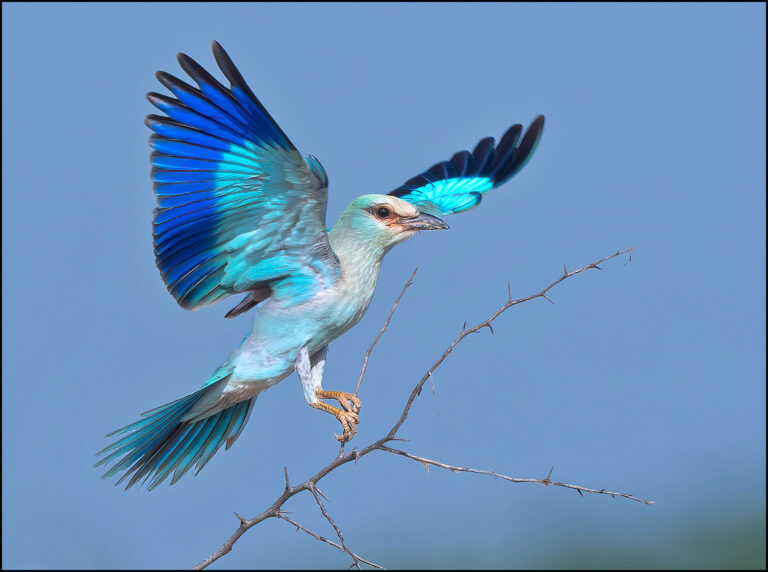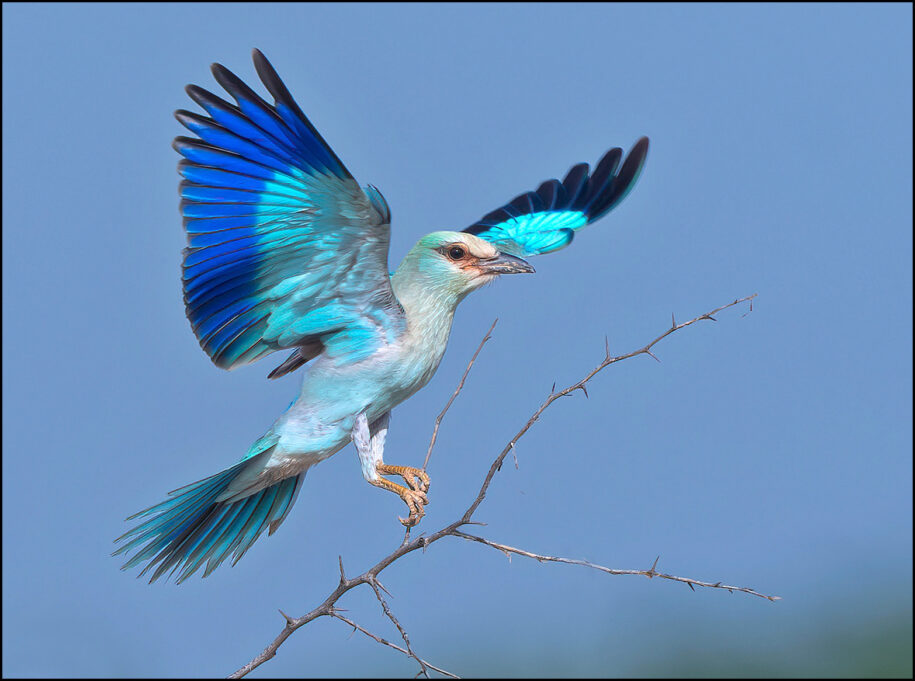The Epic Migration of the European Roller: A Journey Across Continents
The European roller (Coracias garrulus) is a mesmerizing bird known for its striking blue plumage and remarkable migratory journey. Every year, these birds embark on an arduous migration that takes them from their breeding grounds in Europe to the warmer climates of sub-Saharan Africa. This incredible journey showcases not only the resilience of these birds but also the intricate balance of nature that allows such migrations to take place.

The Route: A Long and Perilous Journey
The European roller breeds in Southern and Eastern Europe, as well as parts of Central Asia. As autumn approaches, these birds begin their migration southward, covering thousands of kilometers to reach their wintering grounds in Africa. The primary migration route takes them across the Mediterranean Sea, through North Africa, and deep into the savannas and woodlands of countries like Senegal, Chad, and South Africa. The exact migration routes vary among populations, with some Eastern European rollers migrating through Greece and Italy, crossing the Middle East to reach Africa.
Sahara Crossing: A Test of Endurance
One of the most challenging parts of their journey is crossing the vast Sahara Desert. This stretch of arid land poses a significant challenge due to extreme temperatures and scarce food sources. Yet, these resilient birds manage to navigate through, relying on fat reserves accumulated during their time in Europe and stopovers in more resource-rich regions. Studies have shown that rollers take advantage of short-term resting points in North Africa before taking on the desert’s harsh conditions.
Navigation and Adaptations
Migration is a highly demanding process, requiring exceptional navigational skills. European rollers are believed to use a combination of environmental cues such as the position of the sun, the Earth’s magnetic field, and even the stars to guide their way. Young rollers, despite having no prior migration experience, instinctively follow these cues, often flying alongside more experienced birds.
Physiological Changes for Survival
To prepare for this long journey, rollers undergo physiological changes:
- Fat Reserves: They increase their food intake before migration, building up fat reserves to sustain them.
- Feather Conditioning: Their strong, broad wings and streamlined bodies make them well-adapted for long-distance flight.
- Resting Patterns: Strategic stopovers in resource-rich regions allow them to recover before the next leg of their journey.
Conservation Challenges
Despite their resilience, European rollers face numerous threats, particularly due to habitat destruction and climate change. Agricultural expansion, deforestation, and the loss of natural nesting sites have significantly impacted their population. Additionally, illegal hunting along migratory routes poses another danger, as these birds are sometimes captured for the pet trade or as part of cultural traditions.
Conservation Efforts
Conservation efforts are in place to protect these birds, including:
- Habitat Restoration Projects: Organizations are working to restore forests and grasslands.
- Artificial Nest Boxes: These provide safe nesting sites in areas where natural cavities have been lost.
- International Agreements: Conservation treaties aim to protect migratory routes and reduce poaching.
Organizations such as BirdLife International are raising awareness and promoting policies to ensure the survival of the European roller.
Conclusion
The migration of the European roller is a testament to the incredible adaptability and endurance of nature’s avian travelers. As they traverse continents, these birds remind us of the importance of preserving the delicate ecosystems that support them. Protecting migratory species like the European roller is crucial for maintaining biodiversity and ensuring that future generations can continue to witness their breathtaking journeys across the skies.
By understanding their journey and the challenges they face, we can contribute to conservation efforts that ensure their continued survival. The European roller’s migration is not just a feat of endurance—it’s a symbol of the interconnectedness of ecosystems across the world.

